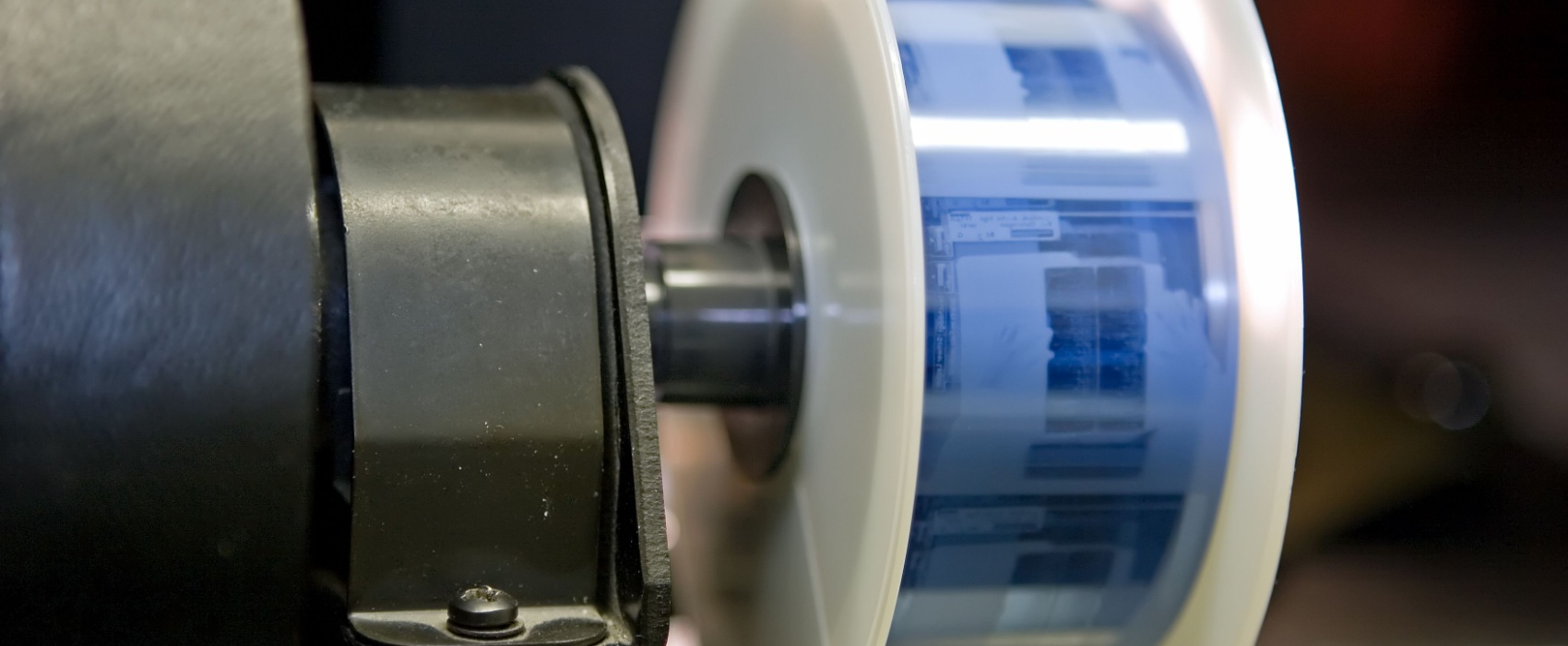Microfilm Scanning Takoma Park, MD
Microfilm Scanning Services Takoma Park, MD. With a variety of archival and digitization solutions, HITS can assist in organizing, consolidating, and safeguarding your data. Since microfilm is now an outdated storage medium, it's more important than ever to preserve your text and photos on microfiche and microcards. Contact us online for a quote or reach out directly at 314-837-4000 to learn more about our Takoma Park, MD, microfilm scanning and other document services.

Industries That Need Microfilm Scanning Services in Takoma Park, MD
Microfilm scanning services have revolutionized document management by transforming archived records into accessible digital formats. Industries that depend on preserving important documents benefit from streamlined processes, improved security measures, and the assurance of long-term accessibility. This technology supports a wide range of applications, from historical archiving to modernizing workflows. Common sectors include:
- Legal and Government Agencies: Microfilm scanning offers legal and government agencies a secure way to preserve critical documents like court records and deeds. Digitizing these materials ensures compliance with retention regulations, improves searchability, and minimizes risks of damage or loss due to environmental hazards.
- Libraries and Archives: For libraries and archives, microfilm scanning offers a dual advantage: it preserves rare materials like newspapers and manuscripts while making them accessible in digital formats. Fragile originals are safeguarded, and digital files can be easily shared with researchers worldwide. The process also frees up physical storage space, making it an efficient preservation strategy.
- Corporations and Businesses: Microfilm scanning is a key solution for businesses aiming to digitize critical documents like tax filings, payroll data, and HR records. This process ensures data security, aids compliance, and optimizes internal processes.
- Educational Institutions: Universities, colleges, and schools use microfilm scanning to digitize student records, research archives, and administrative documents. This ensures secure storage, easier retrieval, and better support for both academic and operational needs.
- Healthcare Providers: Hospitals and clinics historically used microfilm to store patient records, insurance documents, and medical research while conserving space and safeguarding information. Digitization enhances compliance with HIPAA and protects sensitive patient data. Explore STR8VIEW® cloud-based document storage for modern medical facilities.
- Financial Institutions: Banks and insurance companies leverage microfilm scanning to digitize essential documents like transaction logs, contracts, and account details. Digital conversion not only reduces overhead costs but also ensures faster and more reliable document retrieval.
Microfilm scanning services bridge the gap between preserving the past and meeting modern needs, offering faster data retrieval and improved efficiency in a digital-first world. Learn more about these services today.
We offer a variety of services for Takoma Park, MD, organizations, including:
- Cloud-Based EHR Software
- Digital Preservation
- Legal Document Scanning Services
- Digital Archiving
- Blueprint Scanning Services
- Document Scanning Services
- EMR Systems
- Document Destruction Services
- Government Information Management System
What is Microfilm? | Takoma Park, MD, Microfilm Scanning
Microfilm is a method of storing documents in a miniaturized photographic format on rolls of film or flat sheets known as microfiche. This technique was first developed in the early 20th century as a way to preserve documents in a space-saving, long-lasting medium.
Microfilm became a vital tool for libraries, government agencies, and businesses seeking to store large records efficiently. From newspapers and books to legal and corporate documents, this format has been instrumental in maintaining archival integrity for both historical and regulatory purposes.
Even with the dominance of digital storage systems, microfilm remains a trusted method for archival record-keeping. Its ability to withstand environmental conditions like temperature changes and magnetic disruption ensures the longevity of important documents. However, with more organizations transitioning to digital formats to streamline operations, the conversion of microfilm records into digital files has become an increasingly necessary step.
- 35mm Microfilm: Ideal for storing large-format documents like newspapers, engineering blueprints, blueprints, and other historical records. Its ability to preserve intricate details makes it the preferred option for archiving large-scale documents.
- 16mm Microfilm: Historically used for storing smaller, "loose" documents like business records, invoices, and reports. It provides a compact solution for storing documents while maintaining legibility and ease of access when digitized.
- Microfiche: A flat sheet of film that contains multiple images organized in a grid pattern. Commonly used for storing legal documents, bank records, and other important materials, microfiche is a compact and efficient way to preserve numerous documents in a minimal physical space.
- Aperture Cards: Microfilm images mounted on punch cards, primarily used for storing engineering drawings, technical schematics, and blueprints. The card format enhances the ability to organize and quickly retrieve technical materials.
- Roll Film: Continuous microfilm reels that hold thousands of sequential images. This format is ideal for archiving large volumes of related documents, offering a streamlined way to store and retrieve extensive records.
- Cartridge-Based Microfilm: Protected within durable cartridges for secure and easy storage. Commonly used in libraries and archives, this format ensures that valuable collections are preserved in an organized, stable manner for long-term access.
Though digital formats offer faster access and superior search features, microfilm continues to serve as a long-lasting and dependable preservation solution. HITS can help digitize your entire collection of microfilm records, whether they’re in boxes or warehouses, and make them easily accessible. Contact our team today for a quote and more details about our services.
Microfilm Scanning in Takoma Park, MD
Microfilm and microfiche were once the gold standard for storing information, but digital conversion is now essential for modern use. Microfilm conversion and digitization turn reels of film into easy-to-access digital files. Likewise, microfiche conversion and digitization protect card-based records and make managing them simpler in a digital world.
Microfilm scanning is a detailed, precision-driven process aimed at preserving document integrity and ensuring long-term archiving. Below are the main steps HITS takes to maintain data security and manage your records effectively:
- Assessment: The process begins with a thorough inspection of the microfilm to assess its condition, type, and any specific attributes. This step helps identify the optimal scanning methods and equipment. For older or fragile microfilm, additional care is taken to ensure that the material remains intact during the scanning process.
- Preparation: Microfilm is carefully cleaned to remove dust, debris, and other contaminants that could compromise image quality. The film is also organized and inspected for any physical issues like tears or scratches.
- Scanning: The microfilm is digitized at a high resolution, ensuring that every detail is accurately captured. The process typically includes Optical Character Recognition (OCR) technology, which converts the text into searchable and editable digital files. This step ensures the final output is both precise and convenient for retrieving specific information.
- Quality Control: The quality of each image is checked for clarity, accuracy, and alignment. Any issues are corrected to ensure that the final files adhere to the highest standards. Additionally, documents are indexed properly to guarantee they are well-organized and easily searchable.
- Output Options and Deliverables: After scanning, the files are provided in the format that best meets the client’s specifications. Commonly available formats include PDF, TIFF, and JPEG (JPG), allowing for easy indexing and searchability on your device of choice.
Each stage of the microfilm scanning process is essential for turning physical records into secure, high-quality digital assets. With a structured, professional approach, organizations can protect their information for the future, while improving both accessibility and efficiency in document management.
Why HITS for Microfilm Scanning in Takoma Park, MD?
For more than 25 years, HITS has provided expert information management services across the public, private, and federal sectors. We ensure compliance with industry standards like the FTC and ISO 9000. We are committed to protecting and preserving your information, ensuring it remains accessible and usable for the future. For a quote or more information on our microfilm scanning services in Takoma Park, MD, contact us or call 314-837-4000.
